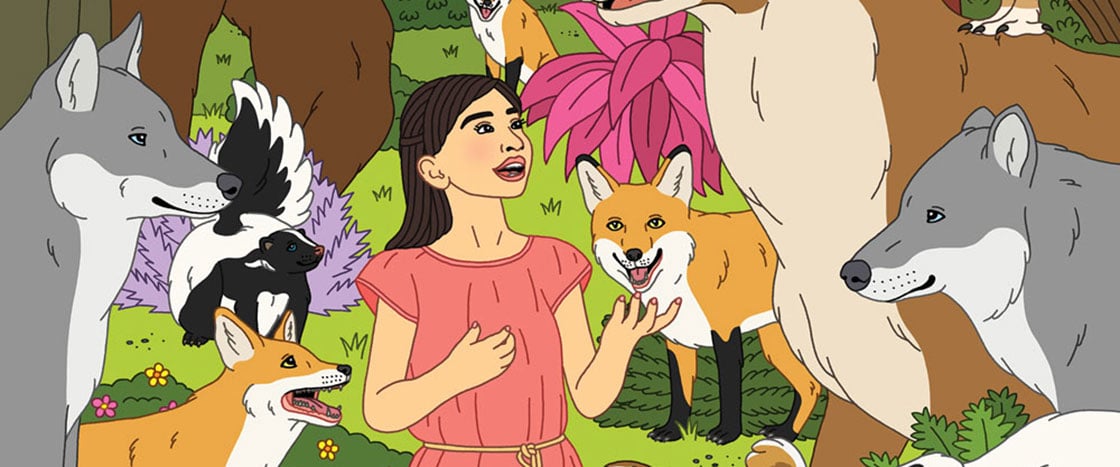Veronica leaned against a tree, feeling more embarrassed every second. Her face was hot, and she could hear someone—probably Gabby—call her name. But Veronica stayed hidden in the shadows.
She wished that she hadn’t said yes when Gabby invited her to play kickball after school. Well, she didn’t say yes, exactly. She just didn’t say no. When Gabby asked, Veronica had—without a word—sheepishly followed the group to Gabby’s backyard.
“You never get to be captain, Veronica,” Gabby said. “Why don’t you pick a team this time?”
And Veronica froze.
She just froze. Like a deer in headlights. She couldn’t move—she couldn’t speak. Her face went beet red, and then she ran.
Why did she have to be so bashful? Why couldn’t she be the type of person who was outgoing, who easily joined the group? She didn’t want to run. But she did, and now she was alone. Just her and the forest.
The forest understood her. The woods were just as quiet as she was.
The air smelled fresh and crisp. The trees were so tall that the leaves could paint the sky. Veronica knew she was truly lucky to live so close to her town’s woodlands and to be able to experience uninterrupted nature . . .
“Vrrrrrrrooooom!”
The noise echoed through the forest, breaking the tranquility of the woods. Heart pounding, Veronica weaved between trees to the source of the sound. There, at last, she saw it. At the edge of the woods, a few men were sawing down trees and placing them into trucks. A new sign read: Coming Soon: Forest View Mall!
They’re clearing the forest, Veronica realized, feeling crushed, as though one of the trees the men were felling dropped right on top of her. They seemed to be at the beginning of their project—but how long before they chopped down the whole woods?
I should say something, she thought. Her throat was dry. “Hey! Don’t! Please stop cutting down the for—”
“Vrrrrrrrrroooooom!”
The chain saw drowned out her voice. Tears in her eyes, Veronica turned away.


